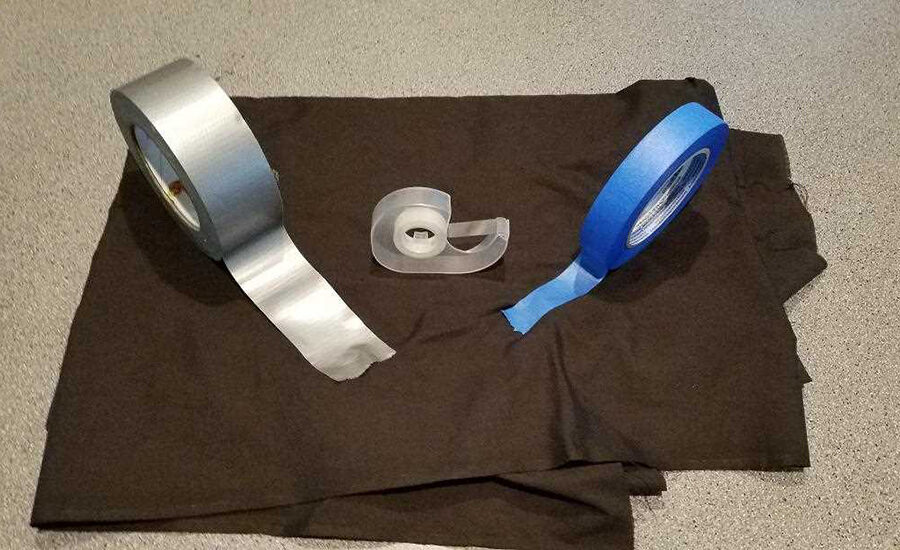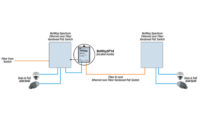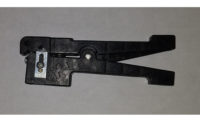There is an art form that unfortunately is vanishing from our culture: the stubborn fortitude that causes people to attempt to fix just about anything around the house or office. While my dad taught me that you can temporarily fix just about anything with duct tape, epoxy glue and tie wraps, today’s devices are not so easily patched or repaired.
But all is not lost for our faithful friend duct tape. Most industry-specific tools are quite expensive, but common fiber optic technician actions when installing connectors and splices can be performed safely and cleanly using inexpensive duct, cellophane and painter’s tape.
Duct Tape
One potentially hazardous aspect of fiber optic connector and splice installations is that while the tech is stripping the fiber of its jacket and buffer coating, on occasion the fiber will break, shearing off an inch or two of glass fiber.
For “proper” disposal of fiber shards, the industry sells special bottles into which the broken fibers should be placed. Or, take 10 inches of duct tape, make a circle with the sticky side out, spear it onto your work surface and as you break or cleave the fibers you can simply put the glass shard onto the rolled tape. Once the job is completed, throw it out.
Cellophane Tape
If you are confronted with a fiber link that was okay yesterday but has now failed, the first step in restoring operations is to clean the fiber “ferrule” tips. A tiny speck of dirt can stop the light signal from traveling through a connector set.
The fiber optic equipment industry has a wide variety of somewhat costly tools and devices designed to clean specific fiber optic ferrules, each requiring a separate sized cleaning device — the cost adds up.
Or, you can take cellophane tape, make a miniature circle as done with the duct tape and simply touch the end of the connector’s ferrule to the sticky side. The cellophane tape method will remove most all dirt and dust from a connector tip. Plug it back in (don’t forget to clean the connector on the back side of the patch panel) and your fiber connection will be restored.
Painter’s Tape
A common situation occurs where a technician is installing six connectors onto a fiber optic distribution cable, where the connectors are to be terminated in a fiber optic patch panel/protective box. It gets tricky when the technician has completed all of the connectors (and tested them) and now must wind the spare fibers into the box to make a neat installation. Here lies the magic of painter’s tape: it’s not very sticky, but it is strong enough to temporarily hold bare or terminated fibers separately onto the side of the box so they are out of the technician’s way while they are working on the other fibers. When ready to wind up the spare fiber lengths and close up the box, the painter’s tape is easy to peel off and leaves no perceptible residue on the sides of the fiber link. This would work on UTP cables as well.
Now keep your hands clean, your thoughts positive and duct, cellophane and painter’s tape at the ready when working with fiber optics.
Contest Announcement! Win a Great Prize!
One of my favorite pastimes is to make up fictitious names for imaginary rock and roll bands. I am particularly enamored of the “(Blank) & (Blank Blanks)” format. For example, “Lava & The Science Fair Volcanoes.” For my loyal readers who get all the way to the end of my column, go ahead and make up a rock band name and email it to me with the subject line, “Rock Band Name Contest” at slaytonsolutions@sbcglobal.net. This contest will continue until I receive a winner, who will be the lucky recipient of a prize from the collection of fiber optic, IP and cable termination training programs available from Slayton Solutions Ltd. The winning entry will be announced in a future SDM column. So, let’s see what you got.





